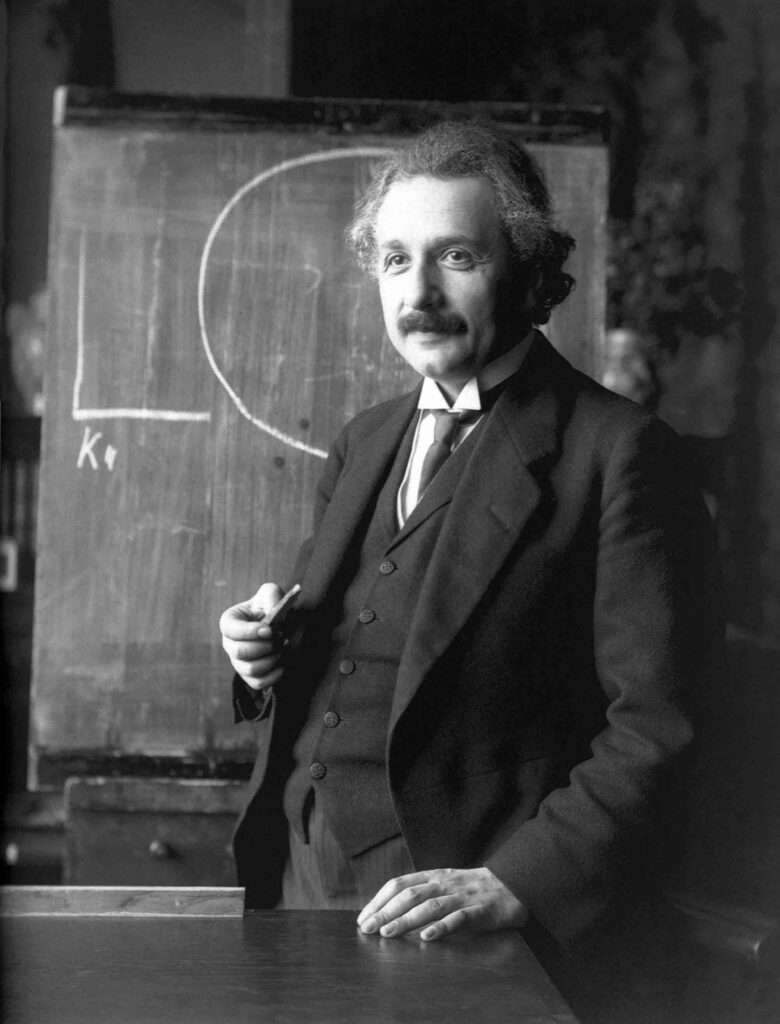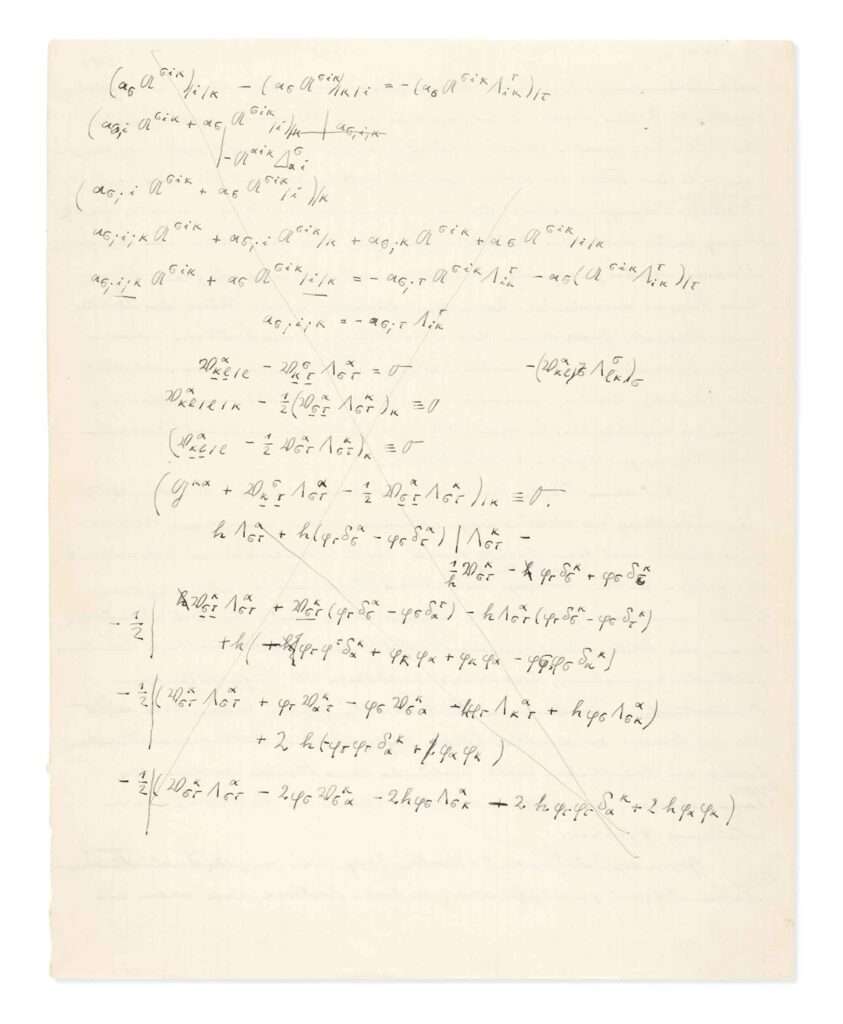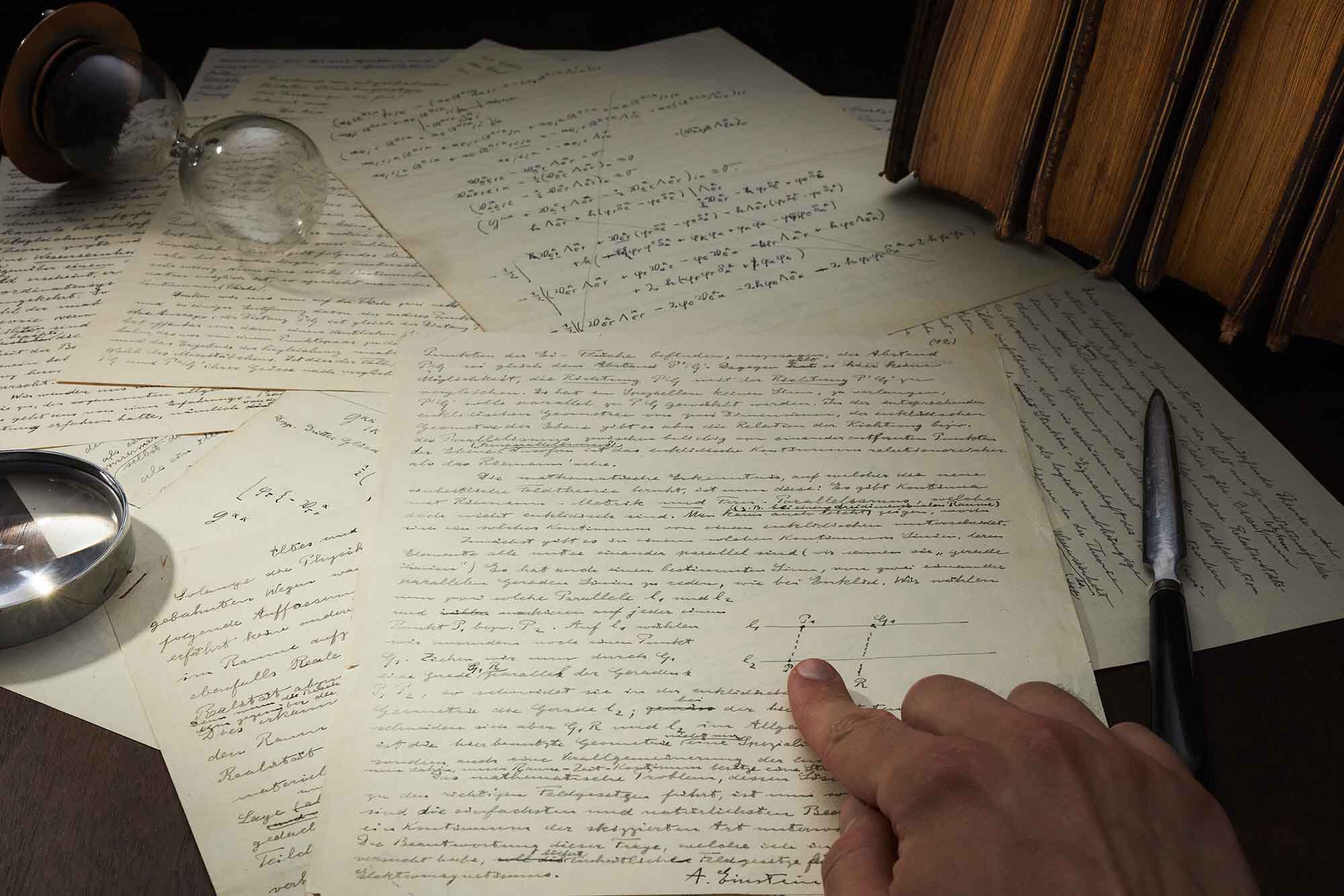A 14-page hand-written manuscript where genius Albert Einstein explains his ground-breaking theories is to be sold at auction for more than GBP 1 million.
The world-famous physicist penned the document in 1929 to explain the thinking behind the calculations that changed the face of modern science.
Now experts at Christie’s auctioneers in Shanghai say that the painstakingly created pages could fetch a fortune.
The manuscript is expected to sell for between CNY 7,000,000 and CNY 10,000,000 (GBP 760,000 to GBP 1,080,000) at a sale on 23rd September.
Entitled ‘Altes und Neues zur Feld‐Theorie‘ (Field Theories, Old and New), the notes are signed ‘A. Einstein’.

The creation of the manuscript has to do with the immense public interest in Einstein’s work as he was constantly asked to explain his theories.
Einstein revolutionised modern physics when he first described gravitation as a geometric warping of space and time.
His general theory of relativity was published in 1915.
In a statement obtained by Newsflash, Christie’s Senior Specialist Dina Zhang said: “In the late 1920s, Einstein was by some distance the most famous scientist in the world, and arguably the most famous scientist in history.”
Zhang explained that this status had been built on the twin achievements of special relativity in 1905 and general relativity in 1915.
She added that it had been sealed after the announcement of the experimental confirmation of general relativity in December 1919.
Zhang said: “By early 1929, there was a widespread belief that Einstein was on the verge of putting in place the third stage of relativity by combining general relativity and Maxwell’s theory of electromagnetism into a single physical and mathematical framework, a ‘unified field theory’, which would account for all of the then-known fundamental forces of nature.”



Research by Christie’s shows that the manuscript was presented by Einstein to his friend, the American judicial philosopher Morris Raphael Cohen in March 1931 before becoming a part of the Charles Hamilton Galleries New York in 1974.
It was auctioned at Christie’s New York in 1983.
Later on, the 290 x 229-millimetre pages covered by Einstein’s significantly cursive writing in blue and black ink were sold and bought by American and French collectors.
They appeared in an auction held by Artcurial in Paris in 2018.
Christie’s expert Zhang said: “The father of ‘the most beautiful physical theory ever invented’ recounts the history of its discovery, explains its working and looks to the possibility of completing the cycle of relativity in a ‘unified field theory’.”
Einstein begins his history of field theory with a sketch of the ‘absolute’ – or pre-relativistic – physics laid down by Isaac Newton.
Zhang explained: “He notes that Newtonian physics left several unanswered questions to which the theory of relativity responded: these included the lack of connection between theories of gravity and electricity, the difficulties posed by the behaviour of light, and the misleading ‘ether’ theory.
“He records the origins of field theory in the electrical work of Michael Faraday, and the crucial contribution of James Clerk Maxwell in bringing together electricity and magnetism in a single mathematical formulation.”

Einstein’s manuscript then elaborates on his own achievements in field theory.
Zhang said: “The first of these is the development of special relativity, including its discovery of mass-energy equivalence (the famous E=mc2). He then follows by recounting the birth of general relativity, beginning with its conceptual starting point and underlining its fundamental implications for the understanding of the structure of space and time.”
The Christie’s expert revealed: “With a rare flash of pride, Einstein (1879-1955) points to the uniqueness of the general theory, including ‘the boldness of its theoretical construction’, and reminds the reader of its experimental confirmation.”
German historian Tilman Sauer praised the documents which now go on auction as a ‘tour de force through the history of field theory.’
To find out more about the author, editor or agency that supplied this story – please click below.
Story By: Thomas Hochwarter, Sub-Editor: Marija Stojkoska, Agency: Newsflash
The Ananova page is created by and dedicated to professional, independent freelance journalists. It is a place for us to showcase our work. When our news is sold to our media partners, we will include the link here.




